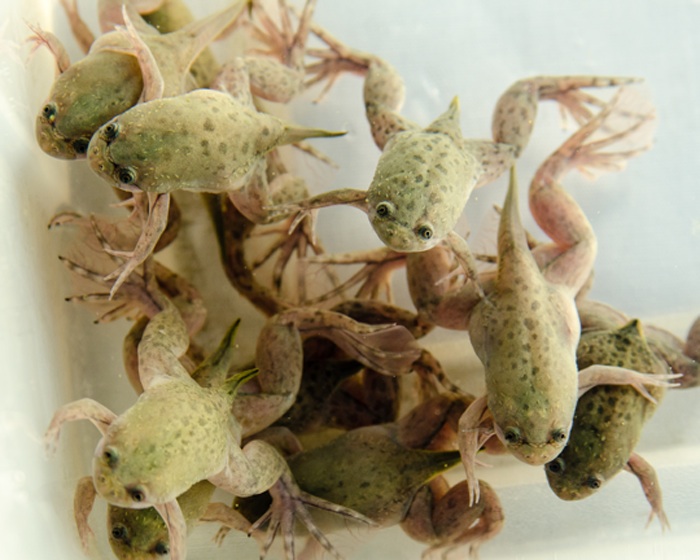Sex chromosomes have evolved from autosomes hundreds of times across the tree of life. In mammals, sex is controlled by the Y chromosome-linked gene SRY, which triggers the development of male anatomy. Sex determination in most mammals is extremely conserved; essentially all marsupials and placental mammals share the same pair of X and Y chromosomes which originated millions of years ago in their common ancestor. Birds also share a very ancient pair of sex chromosomes, but use a ZW sex determination system, in which the W chromosome is found only in females.
But this evolutionary stability is not the case in all groups of vertebrates. In many reptiles and amphibians, sex chromosomes are extremely variable both between species and across groups. In the latest issue of G3, Furman and Evans show that new sex chromosomes have evolved rapidly in a group of five African clawed frog species in the genus Xenopus. These frogs have a ZW sex determination system just as birds do. Previous work has shown that a W-linked gene called DM-W is the trigger for female sexual development in some species this group, but one species, X. borealis, is missing this gene. Furman and Evans used a combination of publically available previously sequenced genomic DNA and newly sequenced transcriptomes to unearth how sex chromosomes and sex determination has evolved in this group.
First, the researchers built a robust phylogenetic tree that confirms that DM-W was present in the shared group ancestor and has since been lost in X. borealis. They also confirmed that DM-W is female specific in the species that is most closely related to X. borealis, indicating the gene was likely sex-linked in the shared ancestor of the whole group. That means the new sex determination system in X. borealis evolved recently.
So if DM-W is no longer the trigger for sex determination in X. borealis, then what is? To answer this question, Furman and Evans collected a large number of random genomic DNA sequences from an X. borealis mother and father and their male and female offspring. They sorted through this dataset to find SNPs with sex-biased inheritance patterns, finding a total of 24 SNPs that were heterozygous in the mother and the daughters, but homozygous in the father and sons. This pattern suggests these SNPs are present on the female-specific W chromosome. These fragments are homologous to regions on one autosome in the other Xenopus species. At some point in X. borealis, that ancestral autosome acquired a sex determination gene and a new sex chromosome was born.
In addition to being recently evolved, the X. borealis sex chromosome system has some surprising properties. It carries three genes that are also located on the mammalian X. Several of these genes are known to be sex-linked in other distantly related lineages, including some fish and lizards. So although autosomes can become sex chromosomes quite rapidly, these findings suggest that some regions of the genome might be predisposed to develop sex determination functions. Though genetic sex determination is relatively common in nature, it is only well understood in a handful of species. This study hints at broader evolutionary patterns that could explain how new sex chromosomes arise repeatedly within lineages without disrupting the critical process of becoming male or female.
Furman, B. L., & Evans, B. J. (2016). Sequential turnovers of sex chromosomes in African clawed frogs (Xenopus) suggest some genomic regions are good at sex determination. G3: Genes| Genomes| Genetics, g3-116. DOI: 10.1534/g3.116.033423































